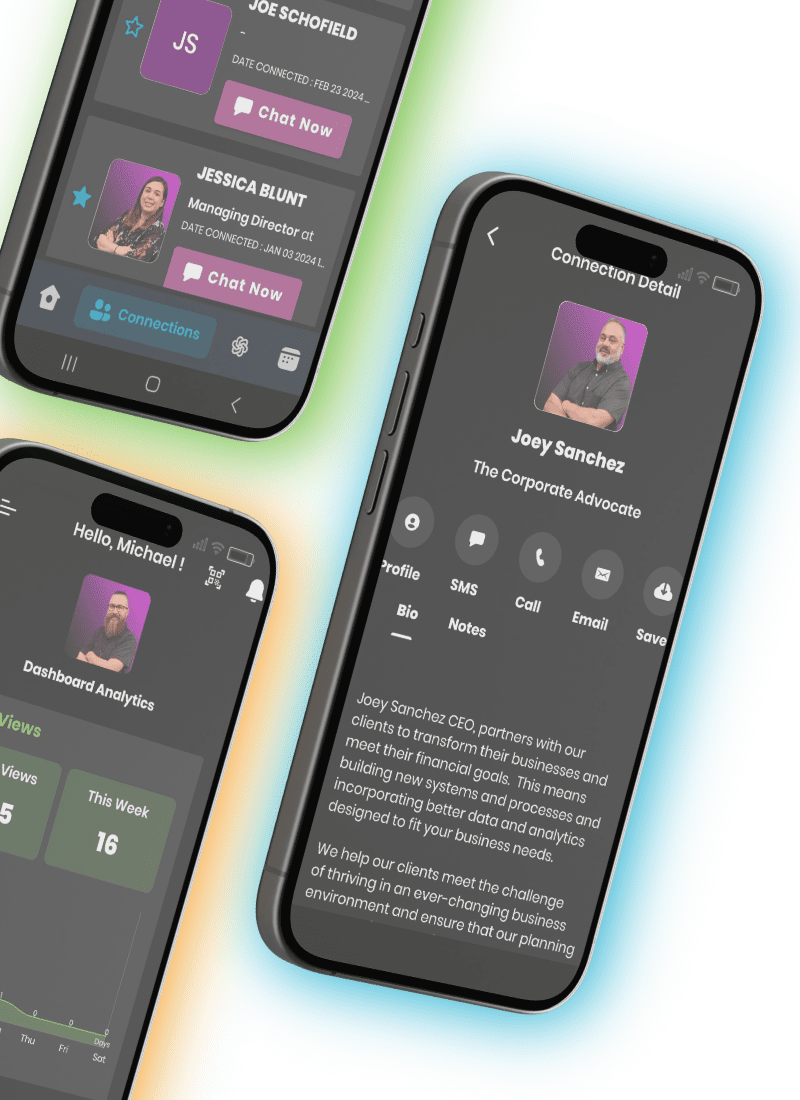In the vast landscape of digital content, where attention spans are fleeting and competition is fierce, mastering the art of content creation is more crucial than ever. Whether you’re a seasoned content creator or just dipping your toes into the expansive ocean of online expression, understanding the dynamics of creating compelling content is the key to leaving a lasting impact on your audience.
This article aims to be your guide through this intricate journey, offering not just theoretical insights but practical, actionable tips to enhance your content creation prowess. From crafting headlines that demand attention to harnessing the power of visuals, SEO optimization, and beyond, we present 14 content creation hacks that are designed to elevate your content strategy and captivate your audience.
In a world where content is king, these hacks serve as the crown jewels, unlocking the doors to creativity and engagement. So, buckle up as we delve into the realm of content creation, unraveling the secrets that can transform your approach and set you on the path to content mastery.
Ready to revolutionize your content game? Let’s dive into the world of content creation hacks that can propel you to new heights in the digital sphere.
1. Captivating Headlines
Crafting headlines that not only grab attention but also entice readers to delve into your content is an art form in itself. Your headline is the first impression, the digital handshake that invites users to explore what you have to offer. Here’s how you can master the art of creating captivating headlines:
Understanding the Psychology of Headlines
The psychology behind an effective headline revolves around triggering curiosity, addressing a pain point, or offering a solution. It’s about connecting with your audience on an emotional level. Consider incorporating power words that evoke emotion, urgency, or surprise to make your headlines stand out.
Utilizing Tools for Headline Optimization
Numerous tools are at your disposal to analyze and optimize your headlines. Platforms like CoSchedule’s Headline Analyzer and Emotional Marketing Value Headline Analyzer can provide valuable insights into the effectiveness of your chosen headlines. These tools consider factors like word balance, headline length, and emotional impact, guiding you to craft headlines with the highest impact.
Testing and Refining
A/B testing is a powerful technique to understand what resonates best with your audience. Experiment with variations of headlines and analyze the performance metrics. This iterative process allows you to refine your approach, ensuring that your headlines are not just attention-grabbing but also resonate with the preferences of your target audience.
Crafting captivating headlines is more than just a clickbait strategy; it’s about setting the tone for the content that follows. By understanding the psychology behind effective headlines, utilizing optimization tools, and embracing a culture of testing and refinement, you can ensure that your content starts with a bang, capturing the interest of your audience from the very first word.
2. Evergreen Content Planning
In the fast-paced world of digital content, creating pieces that stand the test of time is a strategic move that pays dividends in the long run. Evergreen content, as the name suggests, remains relevant and valuable to your audience over an extended period. Here’s how you can plan and execute evergreen content effectively:
Understanding the Essence of Evergreen Content
Evergreen content is not bound by the constraints of timely events or trends. It focuses on topics that have perennial relevance, offering information that remains valuable to your audience irrespective of the season or year. This could include “how-to” guides, educational content, or timeless insights within your niche.
Tips for Evergreen Content Planning
- Identify Timeless Topics: Conduct thorough research to identify topics within your industry or niche that have consistent demand. These could be fundamental concepts, foundational skills, or perennial challenges faced by your target audience.
- Quality Over Timeliness: While timely content has its place, evergreen content thrives on quality. Invest time in creating in-depth, well-researched pieces that provide enduring value. This not only attracts readers over time but also establishes your brand as a go-to resource.
- Update and Repurpose: Even evergreen content needs a touch-up now and then. Regularly revisit and update your evergreen pieces to ensure the information remains accurate and relevant. Additionally, repurpose this content into different formats like infographics, podcasts, or videos to reach a broader audience.
Leveraging Evergreen Content for SEO
Evergreen content plays a crucial role in your SEO strategy. Search engines favor content that demonstrates consistent relevance. By incorporating evergreen pieces into your content mix, you not only provide lasting value to your audience but also improve your website’s search engine ranking over time.
In the dynamic landscape of content creation, mastering the art of evergreen content planning is akin to planting seeds that will continue to bear fruit long after they are sown. By understanding the essence of evergreen content, implementing effective planning strategies, and leveraging its impact on SEO, you ensure a steady flow of engagement and traffic to your digital doorstep.
3. Visual Appeal
In a world where scrolling has become a reflex and attention spans are shorter than ever, the visual appeal of your content is a make-or-break factor. Whether it’s blog posts, social media updates, or marketing collateral, incorporating visually engaging elements is crucial for capturing and retaining your audience’s attention. Here’s how you can enhance the visual appeal of your content:
Recognizing the Power of Visuals
Visual elements such as images, infographics, and videos have the power to convey information faster and more effectively than text alone. They break the monotony of a sea of words and create a more enjoyable and memorable experience for your audience. Understand the role visuals play in storytelling and information delivery.
Tools and Tips for Creating Visually Appealing Content
- Graphic Design Tools: Leverage user-friendly graphic design tools like Canva, Adobe Express, or PicMonkey to create eye-catching visuals even if you’re not a professional designer.
- High-Quality Images: Invest in high-quality, relevant images that complement your content. Stock photo websites like Unsplash and Pexels offer a vast array of visuals that can add a professional touch to your work.
- Infographics for Data Presentation: Convert complex data or information into easily digestible infographics. Tools like Piktochart or Venngage can help you create visually appealing infographics that convey information at a glance.
- Video Content: Embrace the power of video content. Platforms like YouTube, TikTok, and Instagram provide opportunities to engage your audience through short and dynamic video clips. Incorporate video into your content strategy to cater to different preferences.
Consistency in Visual Branding
Maintaining consistency in your visual branding is crucial for creating a recognizable and professional image. Use a consistent color palette, fonts, and design elements across your various content channels. This not only reinforces your brand identity but also enhances the overall visual appeal of your content.
In a digital landscape bombarded with information, capturing attention requires more than compelling text. By recognizing the power of visuals, utilizing accessible design tools, and maintaining consistency in visual branding, you can elevate your content’s visual appeal, making it more engaging, shareable, and memorable.
4. SEO Optimization
In the digital realm, visibility is paramount, and mastering the art of Search Engine Optimization (SEO) is the key to ensuring your content gets the attention it deserves. Effective SEO optimization not only boosts your content’s discoverability but also enhances its relevance to search engines. Here’s how you can optimize your content for SEO:
Balancing Keyword Optimization and Readability
- Strategic Keyword Placement: Identify relevant keywords related to your content and strategically place them in key elements such as titles, headings, and naturally throughout the body. However, avoid keyword stuffing, as it can harm both user experience and search engine rankings.
- Compelling Meta Descriptions: Craft meta descriptions that not only include your target keywords but also entice users to click. A well-crafted meta description serves as a concise preview of your content, encouraging users to explore further.
- Optimizing Images: Ensure that your images are optimized for search engines by using descriptive file names and alt text. This not only improves accessibility but also provides additional context for search engine algorithms.
Creating High-Quality, Shareable Content
- Quality Content Matters: Search engines prioritize high-quality content. Focus on creating content that is informative, valuable, and meets the needs of your audience. Google’s algorithms are designed to reward content that addresses user intent.
- Encourage Backlinks: Build a network of backlinks from reputable sources. Guest posting, collaborating with influencers, and creating shareable content are effective strategies to naturally attract backlinks, signaling to search engines that your content is authoritative.
Utilizing SEO Tools
- Google Analytics: Utilize Google Analytics to gain insights into user behavior, track the performance of your content, and identify areas for improvement.
- Keyword Research Tools: Leverage tools like Google Keyword Planner, SEMrush, or Ahrefs for comprehensive keyword research. These tools provide valuable data to refine your content strategy based on actual search trends.
Staying Informed on SEO Updates
The world of SEO is dynamic, with search engine algorithms evolving regularly. Stay informed about industry updates, algorithm changes, and emerging trends. Subscribe to reputable SEO blogs and forums to ensure your strategies align with the latest best practices.
By finding the delicate balance between strategic keyword optimization and user-friendly readability, creating high-quality, shareable content, utilizing SEO tools, and staying informed on SEO updates, you can enhance your content’s visibility, reach a broader audience, and establish your digital presence in the vast online landscape.
5. Interactive Content
In an era where user engagement is the heartbeat of digital success, incorporating interactive elements into your content strategy is a game-changer. Interactive content goes beyond traditional one-way communication, inviting users to actively participate and engage with your brand. Here’s how you can leverage interactive content to captivate your audience:
Exploring the Benefits of Interactive Content
- Increased Engagement: Interactive content, such as quizzes, polls, and surveys, actively involves users. This heightened engagement not only holds their attention but also creates a memorable experience, fostering a stronger connection between your brand and the audience.
- Data Collection and Personalization: Interactive elements provide valuable data about user preferences and behaviors. Use this data to personalize future content, tailoring it to meet the specific interests and needs of your audience.
Types of Interactive Content and Implementation
- Quizzes and Polls: Create interactive quizzes to entertain and educate your audience. Polls are effective for gathering opinions and insights. Platforms like Typeform and Poll Everywhere make it easy to integrate these elements into your content.
- Interactive Infographics: Elevate traditional infographics by adding clickable elements or animations. This not only makes the information more engaging but also allows users to explore specific aspects in more detail.
- Interactive Videos: Incorporate interactive features into your videos, such as clickable annotations or branching scenarios. This transforms passive viewing into an immersive experience, keeping viewers actively involved.
Tools for Creating Interactive Content
- Ceros: A platform that allows you to create interactive and immersive content experiences without the need for coding skills.
- Playbuzz: Ideal for creating quizzes, polls, and interactive articles to boost audience interaction.
Measuring the Impact of Interactive Content
- User Metrics: Monitor user interaction metrics such as time spent on the content, completion rates for interactive elements, and the number of clicks. This data provides insights into what resonates most with your audience.
- Social Shares and Comments: Evaluate the social sharing and commenting activity on your interactive content. A higher level of sharing indicates that your audience finds the content compelling and worth sharing with their networks.
The Future of Engagement
As user expectations evolve, the demand for interactive content will continue to rise. Embrace this trend by experimenting with various interactive elements and platforms. The more interactive and participatory your content, the more likely it is to leave a lasting impression on your audience.
6. Storytelling Techniques
In the vast sea of content, storytelling stands out as a powerful vessel that carries your message to the hearts and minds of your audience. Beyond mere information delivery, storytelling creates an emotional connection, making your content memorable and impactful. Here’s how you can master the art of storytelling in your content creation:
The Power of Narratives
- Connecting Emotionally: Stories have the unique ability to evoke emotions and create a personal connection with your audience. Whether it’s a personal anecdote, a customer success story, or a fictional narrative, weaving emotions into your content makes it relatable and resonant.
- Humanizing Your Brand: Through storytelling, you can humanize your brand, giving it a personality that goes beyond products or services. Share behind-the-scenes stories, employee experiences, or the journey of your brand to create a narrative that resonates with your audience.
Techniques for Effective Storytelling
- Character Development: Introduce characters, whether real or symbolic, to your narrative. Characters provide a focal point for your audience to relate to and empathize with. This could be your brand persona, a customer, or even an industry influencer.
- Conflict and Resolution: Every compelling story has a conflict that needs resolution. Identify challenges or problems relevant to your audience and present your brand or solution as the hero that provides the resolution. This narrative structure keeps your audience engaged until the satisfying conclusion.
- Visual Storytelling: Combine the power of visuals with your narrative. Utilize images, videos, or infographics to complement and enhance the storytelling experience. Visual elements not only break the monotony of text but also provide additional layers to your narrative.
Implementing Storytelling Across Platforms
- Blog Posts and Articles: Craft narratives within your blog posts and articles. Whether it’s a case study, success story, or a journey-based piece, infusing storytelling into written content adds depth and relatability.
- Social Media: Leverage the narrative format on social media platforms. Use platforms like Instagram or Facebook to share short stories, testimonials, or snippets of your brand’s journey.
The Impact on Audience Engagement
Measure the impact of your storytelling efforts through metrics such as:
- Dwell Time: Analyze the time users spend engaging with your content. Longer dwell times indicate a higher level of engagement, suggesting that your storytelling is resonating with your audience.
- Social Shares: Monitor the number of shares and comments on your storytelling content. A higher level of social interaction indicates that your audience finds the narrative compelling and share-worthy.
In a world inundated with information, storytelling is the beacon that guides your audience through the noise. By recognizing the power of narratives, implementing effective storytelling techniques, and integrating storytelling across various platforms, you can transform your content into a journey that captivates, engages, and leaves a lasting impact.
7. Social Media Integration
In the digital age, social media is a powerhouse for content distribution and audience engagement. Integrating your content seamlessly into various social media platforms is not just a strategy; it’s a necessity. Here’s how you can optimize your content for effective social media integration:
Leveraging the Right Platforms
- Know Your Audience: Understand the demographics and preferences of your target audience. Choose social media platforms where your audience is most active. For instance, visual content might thrive on Instagram, while professional content could find a home on LinkedIn.
- Platform-Specific Strategies: Tailor your content for each platform. Each social media platform has its own culture and best practices. What works on Twitter might not work on Pinterest. Customize your content to align with the expectations and norms of each platform.
Strategies for Social Media-Friendly Content
- Eye-Catching Visuals: Social media is a visual-driven ecosystem. Invest in visually appealing images, infographics, and videos that stand out in crowded feeds. Tools like Canva and Adobe Express can assist in creating stunning visuals.
- Hashtag Strategy: Develop a consistent and relevant hashtag strategy. Research trending hashtags in your industry and create branded hashtags to increase the discoverability of your content.
- Engagement and Interaction: Social media is not just a broadcast channel; it’s a conversation space. Respond promptly to comments, ask questions, and encourage discussions. The more interactive your content, the higher its visibility.
Scheduling and Timing
- Optimal Posting Times: Research and identify the optimal times to post on each platform. This ensures your content reaches the maximum audience when they are most active.
- Scheduling Tools: Utilize social media scheduling tools like Buffer, Hootsuite, or Sprout Social to plan and automate your content posting. This allows for consistent visibility without the need for constant manual intervention.
Analyzing Social Media Metrics
- Engagement Rates: Monitor the engagement rates on your social media posts. Analyze likes, shares, comments, and clicks to understand what resonates most with your audience.
- Follower Growth: Track the growth of your social media followers. A steady increase in followers indicates that your content is attracting and retaining an audience.
Cross-Promotion and Collaboration
- Cross-Promote Content: Share snippets and links to your content across multiple social media platforms. Cross-promotion increases the reach of your content and ensures it’s seen by a diverse audience.
- Collaborate with Influencers: Partner with influencers in your industry for content collaboration. Influencers bring their audience, providing an opportunity for your content to reach new and engaged followers.
Social media integration is not just about sharing links; it’s about crafting content that resonates with each platform’s audience. By leveraging the right platforms, tailoring content strategies, optimizing visuals, scheduling strategically, analyzing metrics, and exploring cross-promotion and collaboration, you can maximize the impact of your content on social media.
8. Collaborative Content Creation
In the dynamic landscape of digital content, collaboration emerges as a powerful force that amplifies creativity and expertise. Collaborative content creation involves pooling the strengths of diverse team members to produce content that surpasses individual capabilities. Here’s how you can harness the benefits of collaborative content creation:
Benefits of Collaborative Content
- Diverse Perspectives: Collaboration brings together individuals with diverse skills, experiences, and perspectives. This diversity enriches the content creation process, offering a variety of insights and approaches that cater to a broader audience.
- Increased Creativity: Working in a collaborative environment sparks creativity. Brainstorming sessions, idea exchanges, and collective problem-solving contribute to the generation of innovative content ideas that may not have emerged in an individual setting.
Tools and Platforms for Seamless Collaboration
- Project Management Tools: Platforms like Asana, Trello, or Monday.com facilitate project management and collaboration. Create content calendars, assign tasks, and track progress in real-time, ensuring everyone is on the same page.
- Collaborative Writing Tools: Tools like Google Docs, Microsoft Teams, or Dropbox Paper allow team members to collaborate on written content simultaneously. Real-time editing, comments, and version history streamline the writing process.
- Communication Platforms: Utilize communication tools like Slack or Microsoft Teams for instant messaging, file sharing, and quick collaboration. These platforms foster real-time communication, reducing delays in the content creation workflow.
Establishing Roles and Responsibilities
- Content Calendar: Develop a content calendar that outlines the schedule for content creation. Clearly define roles and responsibilities for each team member, ensuring everyone understands their contribution to the collaborative process.
- Content Briefs: Provide comprehensive content briefs that outline the objectives, target audience, and key messaging of each piece. Clear guidelines minimize misunderstandings and ensure the cohesive execution of collaborative content.
Navigating Challenges in Collaboration
- Effective Communication: Maintain open and transparent communication channels. Regular check-ins, feedback sessions, and collaborative decision-making contribute to a positive and productive team dynamic.
- Conflict Resolution: Acknowledge that conflicts may arise during collaborative projects. Establish a process for conflict resolution, ensuring that disagreements are addressed constructively, fostering a healthy team environment.
Showcasing the Team’s Expertise
- Author Attribution: Clearly attribute content to individual team members. This not only recognizes their contributions but also highlights the diverse expertise within your team.
- Team Spotlights: Introduce team members through spotlights or bios accompanying the content. This personal touch humanizes your brand and fosters a connection between the audience and the individuals behind the content.
Collaborative content creation is a dynamic journey that transforms the creative process into a collective endeavor. By embracing diverse perspectives, leveraging collaboration tools, establishing clear roles, navigating challenges effectively, and showcasing the team’s expertise, you can elevate your content creation to new heights, delivering value that transcends individual capabilities.
9. Repurposing Content
In the ever-evolving landscape of content creation, the value of your content extends far beyond its initial publication. Repurposing content is a strategic approach that not only maximizes the lifespan of your material but also amplifies its reach across different channels. Here’s how you can breathe new life into your content through effective repurposing:
Maximizing the Value of Existing Content
- Identify Evergreen Content: Start by identifying content with timeless relevance. Evergreen pieces, such as comprehensive guides or fundamental principles, serve as excellent candidates for repurposing.
- Top-Performing Content: Analyze your analytics to identify top-performing content. Pieces that garnered high engagement, shares, or conversions indicate audience interest and are prime candidates for repurposing.
Creative Ways to Repurpose
- Convert Blog Posts into Visuals: Transform written blog posts into visually appealing infographics, slideshows, or images. Tools like Canva or Piktochart make it easy to repurpose textual information into engaging visuals.
- Create Bite-Sized Snippets: Extract key points or quotes from longer-form content and repurpose them as bite-sized snippets for social media posts. This not only diversifies your content but also caters to different audience preferences.
- Compile into eBooks or Guides: Group related blog posts or articles into comprehensive eBooks or guides. This provides added value for your audience and positions you as an authoritative source within your niche.
Tailoring for Different Platforms
- Adapt for Social Media: Customize content for various social media platforms. What works on Instagram may not work on LinkedIn. Tailor your repurposed content to match the tone, format, and expectations of each platform.
- Audio Content: Convert written content into audio formats. Create podcasts or audiobooks, catering to audiences who prefer consuming content on the go or in audio format.
SEO Considerations
- Update and Optimize: Before republishing, update and optimize repurposed content. Ensure information is current, links are functional, and keywords are strategically placed to align with current SEO best practices.
- Canonical Tags: If reposting content on your website, use canonical tags to indicate the original source. This helps search engines understand the relationship between the original and repurposed content, avoiding duplicate content issues.
The Sustainability of Repurposing
- Regular Content Audits: Schedule regular content audits to identify opportunities for repurposing. As your content library grows, there may be hidden gems that can be revitalized for a new audience.
- Measure Performance: Track the performance of repurposed content. Analyze engagement, reach, and conversions to understand the effectiveness of your repurposing strategy.
Repurposing content is not a shortcut but a strategic investment in extending the lifespan and impact of your material. By identifying evergreen and top-performing content, exploring creative repurposing methods, tailoring content for different platforms, considering SEO implications, and ensuring the sustainability of your repurposing efforts, you can unlock the full potential of your content library.
10. A/B Testing
In the world of content creation, the ability to refine and optimize your strategies is a constant pursuit. A/B testing, also known as split testing, is a powerful tool that allows you to experiment with different elements to determine what resonates best with your audience. Here’s how you can implement A/B testing to enhance your content strategy:
Understanding the Importance of A/B Testing
- Data-Driven Decision-Making: A/B testing empowers you to make informed decisions based on real user data. By comparing the performance of two or more variations, you gain insights into what elements contribute to higher engagement, click-through rates, or conversions.
- Continuous Improvement: Content creation is an iterative process. A/B testing provides a framework for continuous improvement. By systematically testing variations, you can refine your approach over time, ensuring that your content evolves in alignment with changing audience preferences.
Elements to A/B Test in Content
- Headlines: Experiment with different headline styles, lengths, and tones. A compelling headline is often the first point of contact with your audience and can significantly impact engagement.
- Call-to-Action (CTA): Test variations of your call-to-action buttons or links. Assess different text, colors, and placements to determine which prompts users to take the desired action.
- Visual Elements: Evaluate the impact of different images, videos, or infographics. Visual appeal plays a crucial role in capturing and retaining audience attention.
Implementing A/B Testing
- Define Clear Objectives: Clearly define the objectives of your A/B test. Whether it’s increasing click-through rates, improving conversion rates, or reducing bounce rates, having specific goals guides the testing process.
- Create Variations: Develop distinct variations for the elements you’re testing. Ensure that each variation is significantly different from the others to draw meaningful conclusions.
- Randomized Testing: Implement randomized testing to eliminate bias. Randomly present variations to users within your target audience to ensure a representative sample.
Analyzing A/B Test Results
- Statistical Significance: Use statistical significance to determine the reliability of your results. Tools like VWO or Optimizely often include statistical analysis features to assess the validity of your findings.
- Iterative Testing: Implement iterative testing based on the results of your initial A/B tests. Continue refining and optimizing your content based on the insights gained from each round of testing.
Long-Term A/B Testing Strategy
- Consistency in Testing: Establish a consistent schedule for A/B testing. Regular testing allows you to adapt to changing trends and preferences in your audience.
- Document Learnings: Keep a record of your A/B test results and the corresponding changes implemented. Documenting learnings ensures that your content strategy benefits from past insights.
A/B testing is a dynamic process that requires commitment and an analytical mindset. By understanding the importance of A/B testing, identifying elements to test, implementing tests effectively, analyzing results rigorously, and adopting a long-term testing strategy, you can harness the power of experimentation to continually enhance the performance of your content.
11. Mobile Optimization
In an era dominated by smartphones, ensuring that your content is seamlessly accessible and engaging on mobile devices is not just a best practice but a necessity. Mobile optimization is the key to reaching and captivating the ever-growing audience that prefers to consume content on their handheld devices. Here’s how you can optimize your content for a mobile-friendly experience:
Recognizing the Significance of Mobile Optimization
- Mobile User Dominance: With a significant portion of internet users accessing content through mobile devices, optimizing for mobile is not an option—it’s imperative. Failing to provide a satisfactory mobile experience risks alienating a substantial portion of your audience.
- SEO Impact: Search engines prioritize mobile-friendly content. Websites that are optimized for mobile devices are more likely to rank higher in mobile search results, contributing to increased visibility and organic traffic.
Tips for Effective Mobile Optimization
- Responsive Design: Implement responsive web design to ensure that your website adapts seamlessly to different screen sizes. This ensures a consistent and user-friendly experience across various devices.
- Mobile-Friendly Content: Craft concise and easily digestible content. Break long paragraphs into shorter sections, use clear headings, and prioritize essential information for a streamlined mobile reading experience.
- Optimized Images and Media: Compress images and optimize media files for faster loading times on mobile devices. Large files can lead to slow page loading, impacting both user experience and SEO.
Navigation and Usability
- Intuitive Navigation: Simplify navigation for mobile users. Ensure that menus are easily accessible, and the overall structure of your content is user-friendly, allowing for effortless scrolling and exploration.
- Touch-Friendly Elements: Design clickable elements with touch in mind. Buttons and links should be adequately sized and spaced to accommodate touch gestures, preventing accidental clicks and enhancing overall usability.
Mobile-First Content Creation
- Prioritize Loading Speed: Mobile users often have limited patience for slow-loading content. Optimize your website’s loading speed by minimizing unnecessary elements and utilizing browser caching.
- Structured Data Markup: Implement structured data markup to enhance the visibility of your content in mobile search results. This helps search engines understand the context of your content and present relevant snippets to users.
Testing Across Devices
- Cross-Browser Compatibility: Test your website and content across various browsers and devices to ensure a consistent experience. What works on one mobile device or browser should ideally work seamlessly on others.
- User Testing: Conduct user testing specifically focused on the mobile experience. Gather feedback from actual users to identify potential pain points and areas for improvement.
Mobile optimization is not a one-time task but an ongoing commitment to providing an optimal experience for your audience. By recognizing the significance of mobile optimization, implementing effective optimization tips, prioritizing navigation and usability, adopting a mobile-first mindset in content creation, and regularly testing across devices, you can ensure that your content remains accessible and engaging in the mobile-centric digital landscape.
12. Analytics and Performance Tracking
In the dynamic realm of digital content, data is your compass. Analytics and performance tracking provide invaluable insights into how your content is performing, helping you make informed decisions to optimize your strategy. Here’s how you can effectively leverage analytics to enhance your content creation efforts:
The Significance of Analytics in Content Creation
- Informed Decision-Making: Analytics empower you to make data-driven decisions. Instead of relying on assumptions, you can understand how your audience interacts with your content, allowing you to refine and tailor your approach for maximum impact.
- Identifying High-Performing Content: Analytics reveal which pieces of content resonate most with your audience. Identifying high-performing content provides a blueprint for creating similar pieces that align with audience preferences.
Key Metrics to Track
- Engagement Metrics: Monitor metrics such as page views, time spent on page, and bounce rates to gauge how effectively your content engages your audience. High engagement metrics indicate that your content is resonating with users.
- Conversion Rates: Track conversion metrics related to your content goals, whether it’s sign-ups, downloads, or purchases. Analyzing conversion rates helps you understand the effectiveness of your content in driving desired actions.
Utilizing Google Analytics
- Audience Insights: Explore audience demographics, interests, and behavior in Google Analytics. This information provides a deeper understanding of your audience, enabling you to tailor your content to their preferences.
- Behavior Flow: Analyze the behavior flow to understand how users navigate through your website. Identify popular entry points, common pathways, and potential drop-off points to optimize user journeys.
Content Performance Analysis
- Top Content Reports: Utilize top content reports to identify which pages and pieces of content attract the most traffic. This information guides your content creation strategy, allowing you to capitalize on successful themes and topics.
- A/B Test Analysis: Evaluate the results of A/B tests to understand the impact of different variations on user behavior. Analyzing the performance of each variation provides insights for refining future content.
Social Media Analytics
- Platform-Specific Metrics: Each social media platform offers its set of analytics. Monitor metrics such as likes, shares, comments, and click-through rates to gauge the performance of your content on social media.
- Referral Traffic: Track referral traffic from social media to your website. Understanding which social platforms drive the most traffic helps you prioritize and tailor your social media content strategy.
Iterative Improvement Based on Analytics
- Content Iteration: Use analytics to inform content iteration. Identify underperforming content and assess whether adjustments to headlines, visuals, or calls-to-action can enhance its performance.
- Content Calendar Optimization: Refine your content calendar based on analytics insights. Identify peak engagement times and days, aligning your publishing schedule with when your audience is most active.
Analytics and performance tracking are not just retrospective measures but proactive tools for shaping the future of your content strategy. By recognizing the significance of analytics, tracking key metrics, utilizing tools like Google Analytics, analyzing content performance, monitoring social media analytics, and implementing iterative improvements based on analytics insights, you can transform data into actionable strategies, ensuring that your content remains relevant and impactful in the ever-evolving digital landscape.
13. Community Engagement
In the digital sphere, fostering a sense of community around your content is more than building an audience; it’s about cultivating a tribe of engaged and loyal supporters. Community engagement goes beyond likes and shares, creating a two-way conversation that enhances the value of your content. Here’s how you can build and nurture a vibrant community around your content:
Building a Community-Centric Mindset
- Authenticity: Cultivate authenticity in your interactions. Share behind-the-scenes glimpses, personal stories, and genuine insights. Authenticity resonates with audiences and establishes a foundation of trust.
- Active Listening: Actively listen to your audience. Pay attention to comments, messages, and social media mentions. Understanding the needs and concerns of your community allows you to tailor your content to their interests.
Establishing Community Spaces
- Social Media Groups: Create dedicated groups or communities on social media platforms. These spaces allow like-minded individuals to connect, share, and engage with each other, fostering a sense of belonging.
- Forums and Discussion Boards: Establish forums or discussion boards on your website. These platforms provide a centralized space for community members to exchange ideas, ask questions, and share experiences.
Facilitating Meaningful Interactions
- Ask Questions: Encourage conversation by posing questions to your audience. Whether it’s in blog comments, social media posts, or dedicated forums, asking questions invites community members to share their thoughts and experiences.
- User-Generated Content: Showcase user-generated content. Encourage your community to contribute by sharing their stories, photos, or creations related to your content. This not only acknowledges their contributions but also strengthens the sense of community.
Recognizing and Rewarding Engagement
- Acknowledgment: Acknowledge and respond to community members. A simple reply or thank you can go a long way in making individuals feel valued and appreciated.
- Community Features: Highlight community members through features, spotlights, or shoutouts. This recognition not only celebrates their contributions but also motivates others to actively engage.
Hosting Virtual Events
- Webinars and Q&A Sessions: Host webinars or live Q&A sessions. These interactive events provide opportunities for real-time engagement, allowing community members to directly connect with you and each other.
- Virtual Meetups: Organize virtual meetups or networking events. These gatherings foster a sense of camaraderie among community members, creating a space for meaningful connections to flourish.
Community Guidelines and Moderation
- Clear Guidelines: Establish clear community guidelines. Clearly communicate expectations for respectful and constructive interactions. This ensures a positive and inclusive environment for all members.
- Effective Moderation: Implement effective moderation strategies. Whether it’s monitoring discussions, addressing conflicts, or moderating user-generated content, proactive moderation helps maintain a healthy community atmosphere.
Building a community around your content requires continuous effort and a genuine commitment to fostering meaningful connections. By adopting a community-centric mindset, establishing dedicated spaces, facilitating interactions, recognizing and rewarding engagement, hosting virtual events, and implementing clear guidelines and effective moderation, you can cultivate a thriving community that amplifies the impact of your content.
14. Future Trends in Content Creation
The landscape of content creation is constantly evolving, shaped by technological advancements, changing user behaviors, and emerging trends. Staying ahead of the curve is crucial to maintaining a competitive edge. Here are some anticipated trends that will likely shape the future of content creation:
Interactive and Immersive Experiences
Immersive Technologies: As technology continues to advance, expect an increased focus on immersive experiences. Augmented reality (AR) and virtual reality (VR) will play a pivotal role in creating content that goes beyond traditional formats, providing users with interactive and engaging experiences.
360-Degree Content: The popularity of 360-degree content will rise, offering users a more immersive way to explore and interact with their surroundings. This trend is particularly relevant for industries such as travel, real estate, and education.
Artificial Intelligence (AI) Integration
Content Personalization: AI will be instrumental in tailoring content to individual user preferences. Content creators will leverage AI algorithms to analyze user behavior and deliver personalized content recommendations, enhancing user engagement.
Automated Content Creation: AI-driven tools will streamline content creation processes. From generating written content to designing visuals, AI will assist creators in producing high-quality materials more efficiently.
Voice-Activated Content
Voice Search Optimization: With the growing prevalence of voice-activated devices, optimizing content for voice search will become imperative. Content creators will need to adapt their strategies to align with the conversational nature of voice search queries.
Voice-Driven Platforms: The rise of smart speakers and voice-driven platforms will lead to the creation of content specifically designed for audio consumption. Podcasts, voice-guided tutorials, and interactive voice experiences will become increasingly popular.
Short-Form and Bite-Sized Content
Micro-Content: Short-form content, such as short videos, GIFs, and quick tutorials, will continue to dominate. This trend caters to the preferences of audiences with limited time and a desire for quick, digestible information.
Social Media Stories: The popularity of ephemeral content, as seen in social media stories, will persist. Platforms offering features for creating temporary, engaging content will remain essential for content distribution.
Ephemeral Content and Disappearing Posts
Fleeting Content: The concept of temporary or disappearing content will expand beyond social media stories. More platforms may adopt features that encourage the creation of content with a limited lifespan, fostering a sense of urgency and exclusivity.
In-the-Moment Engagement: Ephemeral content allows creators to connect with their audience in real-time, fostering a sense of immediacy and authenticity. This trend aligns with the desire for unfiltered and spontaneous interactions.
Sustainable and Ethical Content
Environmental Consciousness: Content creators will increasingly prioritize sustainability in their practices. From eco-friendly production methods to content that raises awareness about environmental issues, sustainability will become a significant focus.
Ethical Storytelling: As consumers demand transparency and ethical business practices, content creators will embrace ethical storytelling. Authentic narratives that highlight social responsibility and ethical values will resonate with conscious audiences.
Collaborative Content and Co-Creation
Community Collaboration: Content creation will become more collaborative, involving communities in the ideation and creation process. Platforms that facilitate co-creation and collaboration will gain prominence, enabling diverse voices to contribute to content.
User-Generated Content (UGC): UGC will continue to be a driving force. Brands and creators will actively encourage their audience to generate content, fostering a sense of community and providing authentic perspectives.
Embracing the Future
Staying ahead in content creation requires a keen eye on emerging trends and a willingness to adapt. As technology evolves, user preferences shift, and new platforms emerge, content creators who embrace these future trends will be well-positioned to captivate audiences in innovative and compelling ways.
Conclusion
As we navigate the ever-changing landscape of content creation, it’s evident that innovation and adaptability are the cornerstones of a successful strategy. The journey through the fourteen content creation hacks has been a roadmap, providing insights into optimizing your approach for maximum impact. From harnessing the power of storytelling to embracing future trends, each hack contributes to the overarching goal of creating content that resonates, engages, and stands the test of time.
The foundation of any successful content strategy lies in understanding your audience. Crafting content with their needs, preferences, and behaviors in mind ensures that your message not only reaches them but also captures their attention in a meaningful way. The journey doesn’t end with the creation of content; it extends to fostering a community, leveraging analytics for continuous improvement, and embracing future trends that will shape the way we connect and communicate.
The power of collaboration, the art of storytelling, and the utilization of cutting-edge technologies are not isolated tactics but interconnected threads that weave together a tapestry of content excellence. A/B testing refines, mobile optimization ensures accessibility, and community engagement transforms passive viewers into active participants. As we peer into the future, trends like AI integration, immersive experiences, and ethical storytelling beckon us to explore new frontiers in content creation.
Remember, content creation is not just a task; it’s a journey. It’s a journey fueled by creativity, guided by data, and propelled by a deep understanding of the ever-evolving digital landscape. The fourteen content creation hacks presented here are not rigid rules but flexible tools in your arsenal, allowing you to navigate this journey with confidence and ingenuity.
In the dynamic world of digital content, the only constant is change. Embrace it, experiment with new ideas, and stay attuned to the needs and desires of your audience. Your content is not just information; it’s an experience, a conversation, and a connection. As you implement these content creation hacks and embark on this ongoing journey, may your content continue to captivate, inspire, and leave a lasting impact on your audience.
Happy creating!
















